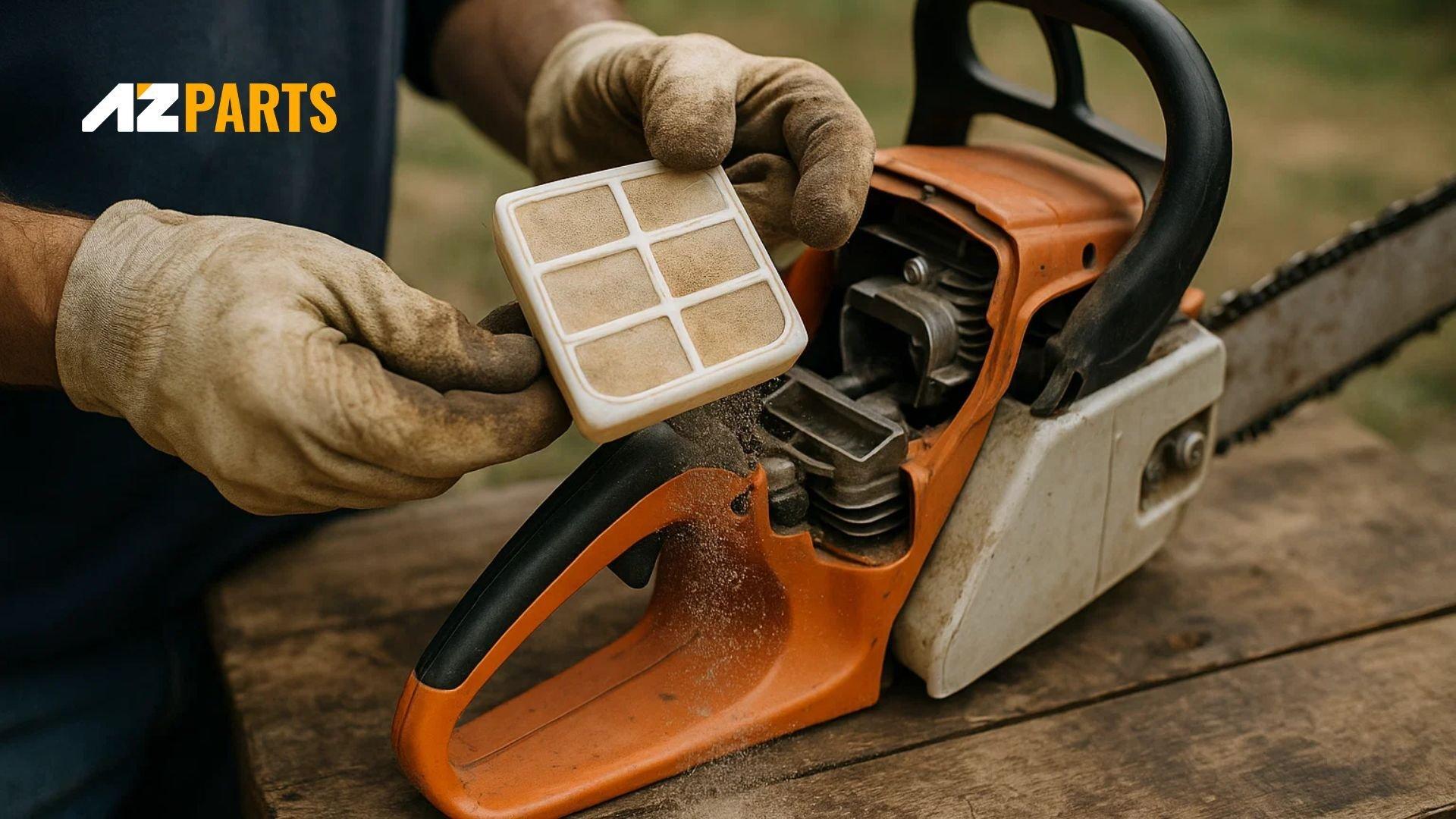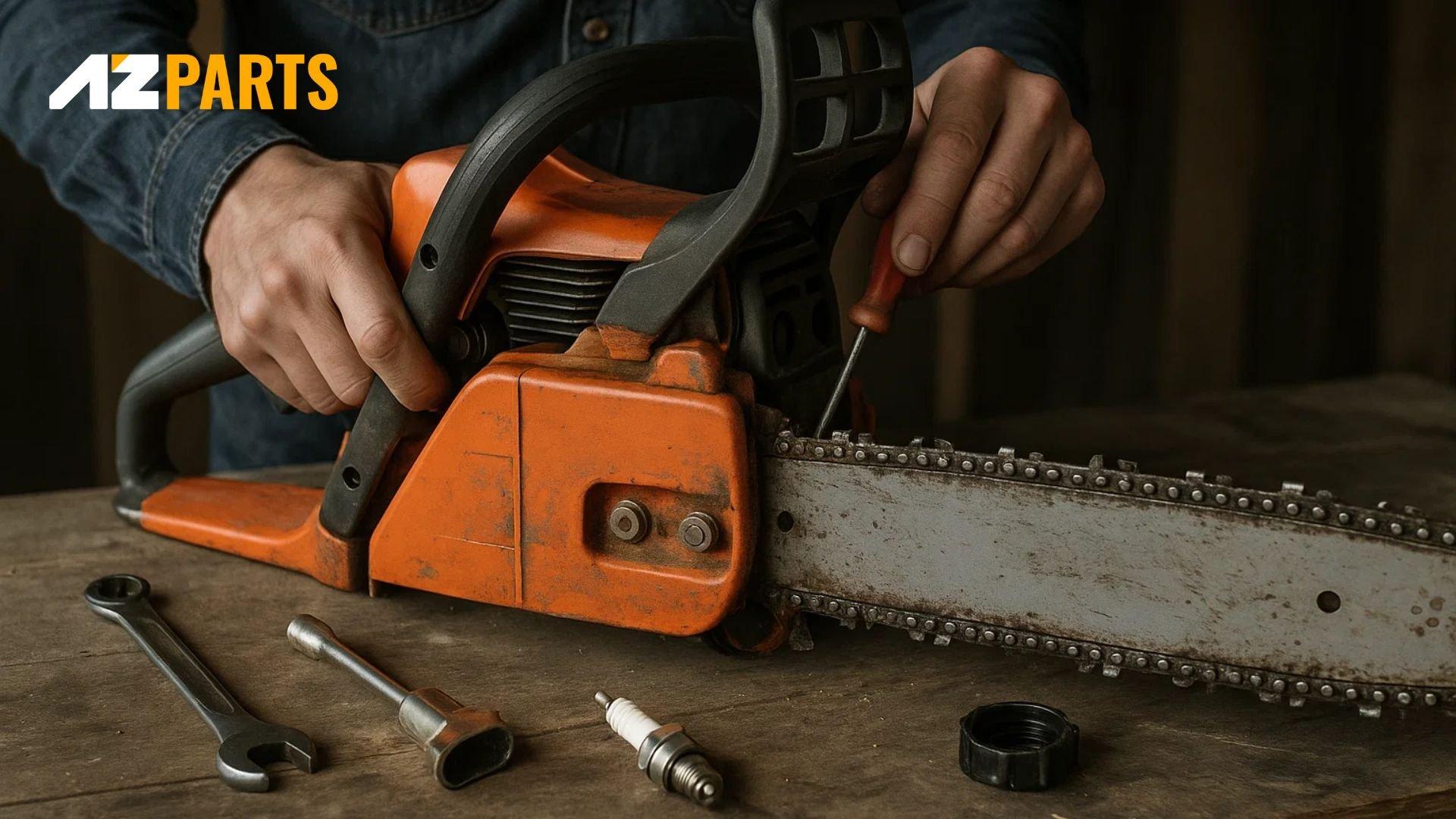Repair help
Why Is My Chainsaw Smoking? Common Causes and Fixes
AZparts Team
Updated on July 31, 2025
9 min read
Chainsaw smoking is more than just an annoyance. It’s a warning sign of deeper mechanical problems that could lead to costly damage if ignored. Whether it’s due to clogged air filters, bad fuel mix, or worn-out components, acting fast is essential. In this guide, AZParts will help you tackle the issue with expert repair guides and top-quality replacement parts, so your chainsaw runs like new again.

1. Identify the Source of the Smoke
When a chainsaw starts emitting smoke during use, identifying the source of that smoke is the first step toward proper troubleshooting. Typically, smoke will originate from one of two main areas: the engine compartment or the bar and chain assembly. Each location signals a different type of issue and requires specific fixes.
1.1 Smoke from the Engine Area
Smoke from the engine indicates internal combustion or fuel system issues. The color of the smoke provides valuable diagnostic clues:
- Black smoke suggests a clogged air filter. When airflow is restricted, the engine burns too much fuel, resulting in incomplete combustion and dark smoke. Cleaning or replacing chainsaw air filter often resolves this issue.
- White smoke usually means water condensation is being heated inside the combustion chamber, especially if the chainsaw has been stored in a humid environment. Allowing the engine to run for a few minutes may evaporate the moisture.
- Blue smoke points to an overly rich oil mixture or a flooded engine. This occurs when too much oil enters the combustion chamber, either from incorrect fuel mixing or over-priming during startup.
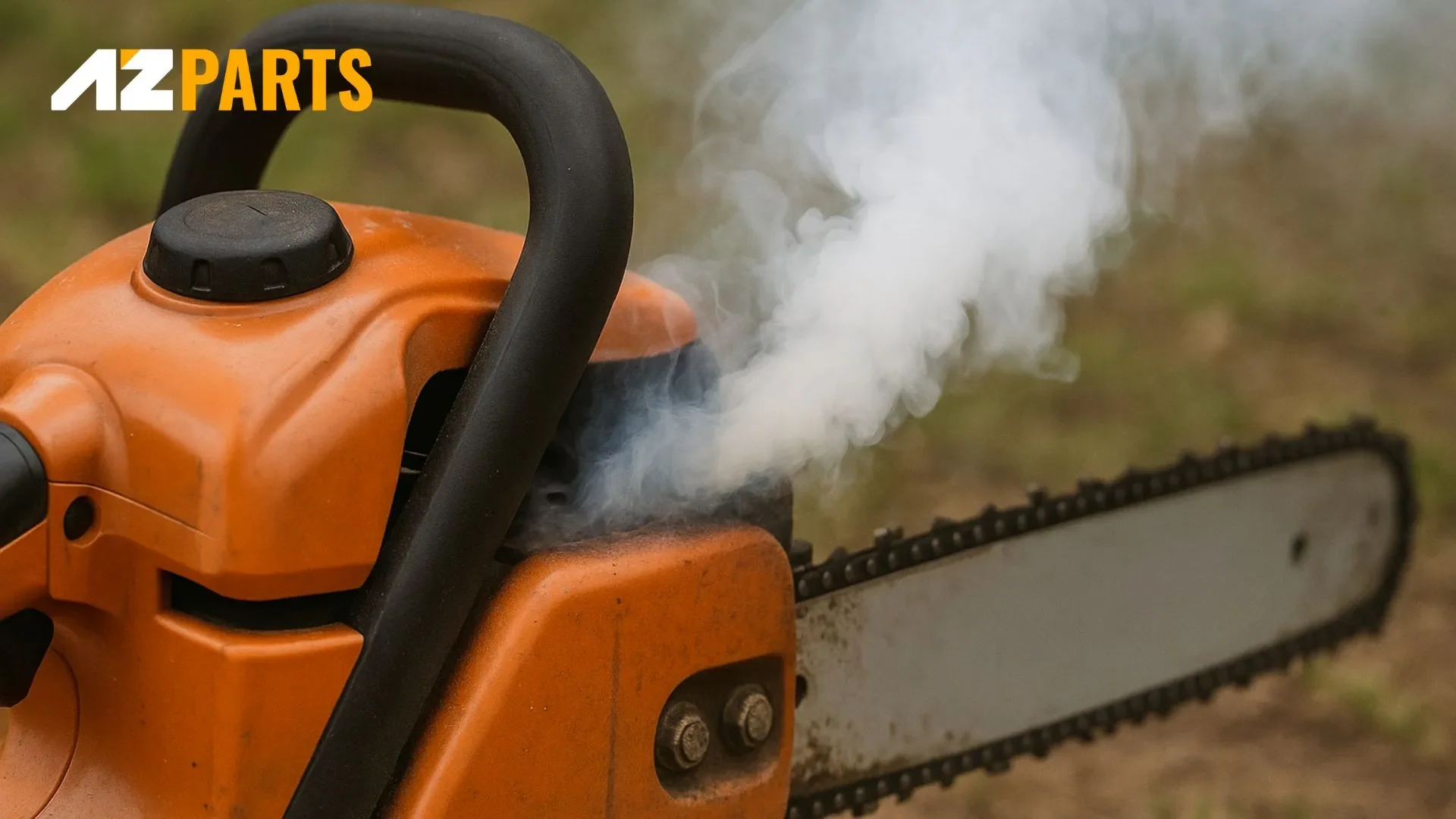
Diagnosing Engine Smoke in Chainsaws (Source: AZParts)
Other engine-related causes include:
- Using the wrong fuel-oil ratio (e.g., not following the 50:1 or 40:1 ratio depending on the model)
- Leaking crankshaft seals or damaged piston rings
- Residual oil in the exhaust system from prior use
Diagnosing engine smoke involves checking your fuel mix, inspecting the spark plug for fouling, and ensuring the air intake system is clean.
1.2 Smoke from the Bar and Chain
If the smoke appears near the cutting area while the chainsaw is in operation, especially when under load. The issue likely stems from friction or cutting inefficiency. Common causes include:
- Incorrect chain type for the wood being cut. For example, using a chain designed for softwood on hardwood can cause excessive resistance and heat buildup.
- Clogged lubrication holes on the bar, preventing bar oil from reaching the chain properly. Without lubrication, the chain overheats and produces smoke.
- Improper depth gauge setting. If the depth gauges are too low, the chain bites too deeply into the wood, overloading the motor and creating excess heat and smoke.
- A dull or poorly sharpened chain. A dull chain increases cutting resistance, which generates more friction and causes overheating.
- The bar oil reservoir is empty. Running a chainsaw without lubrication can permanently damage the bar and chain.
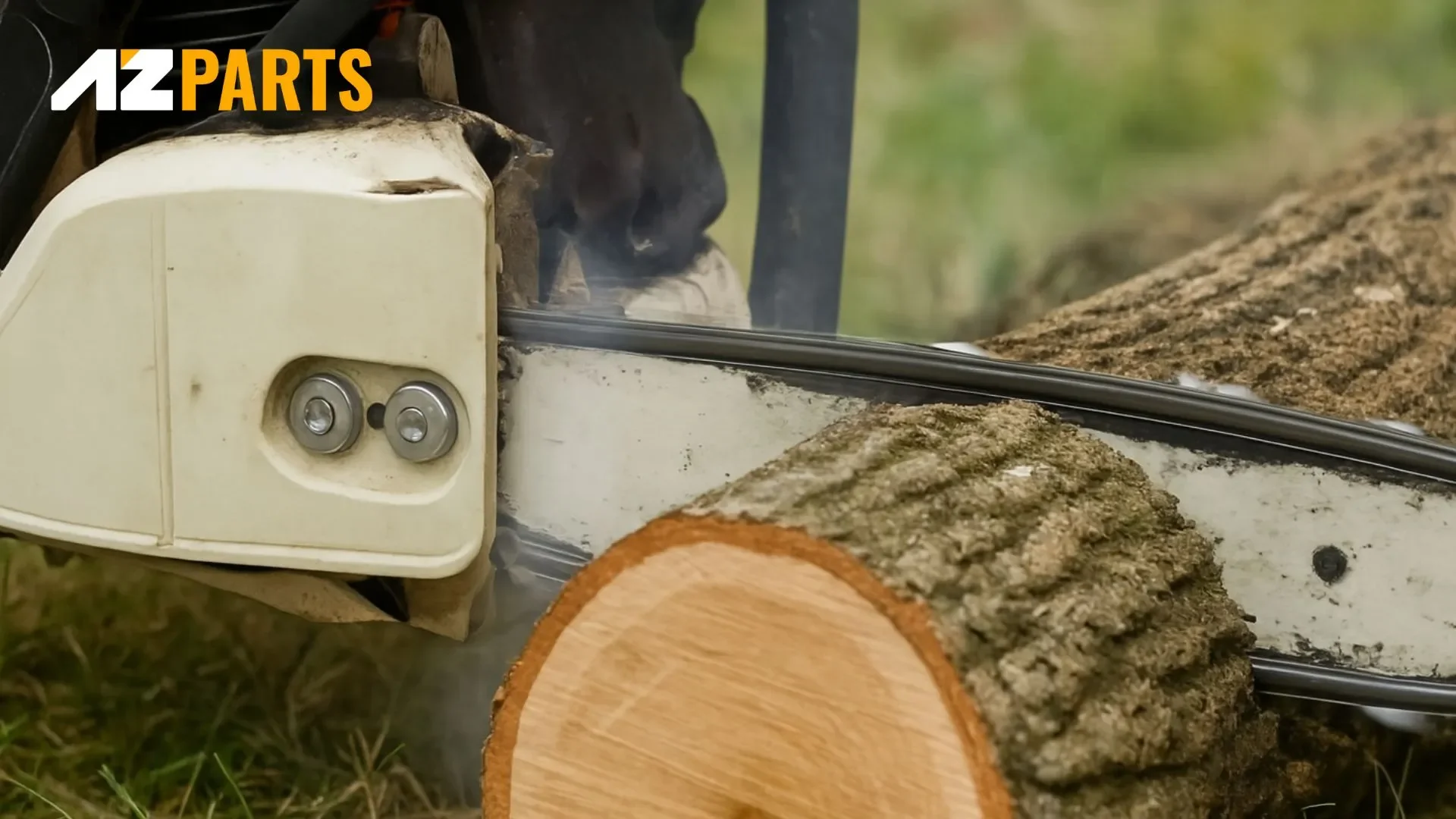
Identifying Smoke from Chainsaw Bar Area During Cutting (Source: AZParts)
To resolve smoke coming from the bar and chain area, start by checking that the oil tank is full and that the automatic oiler is functioning properly, as insufficient lubrication is a common cause of overheating. Next, clean the oiling ports on the bar to ensure smooth oil flow during operation. If the chain is dull or worn, sharpen it or replace it to reduce friction. Additionally, check and adjust the depth gauge using the correct tool or file to maintain optimal cutting performance. Identifying whether the smoke originates from the engine or the cutting components is essential, as it helps you apply the correct solution and prevents long-term damage to your chainsaw.
2. Understanding the Color of the Smoke
Recognizing the color of your chainsaw's smoke is crucial for diagnosing issues early and maintaining optimal performance. Here's what different smoke colors typically indicate and how you can fix them.
2.1 White or Blue Smoke
What it means: White or blue smoke usually signals that oil is being burned inside the combustion chamber. This is often caused by fuel mixture problems or lubrication system faults. These two colors often appear together and are accompanied by a sharp, oily odor.To help you troubleshoot more efficiently, the following table matches each common cause of white or blue smoke with its corresponding fix.
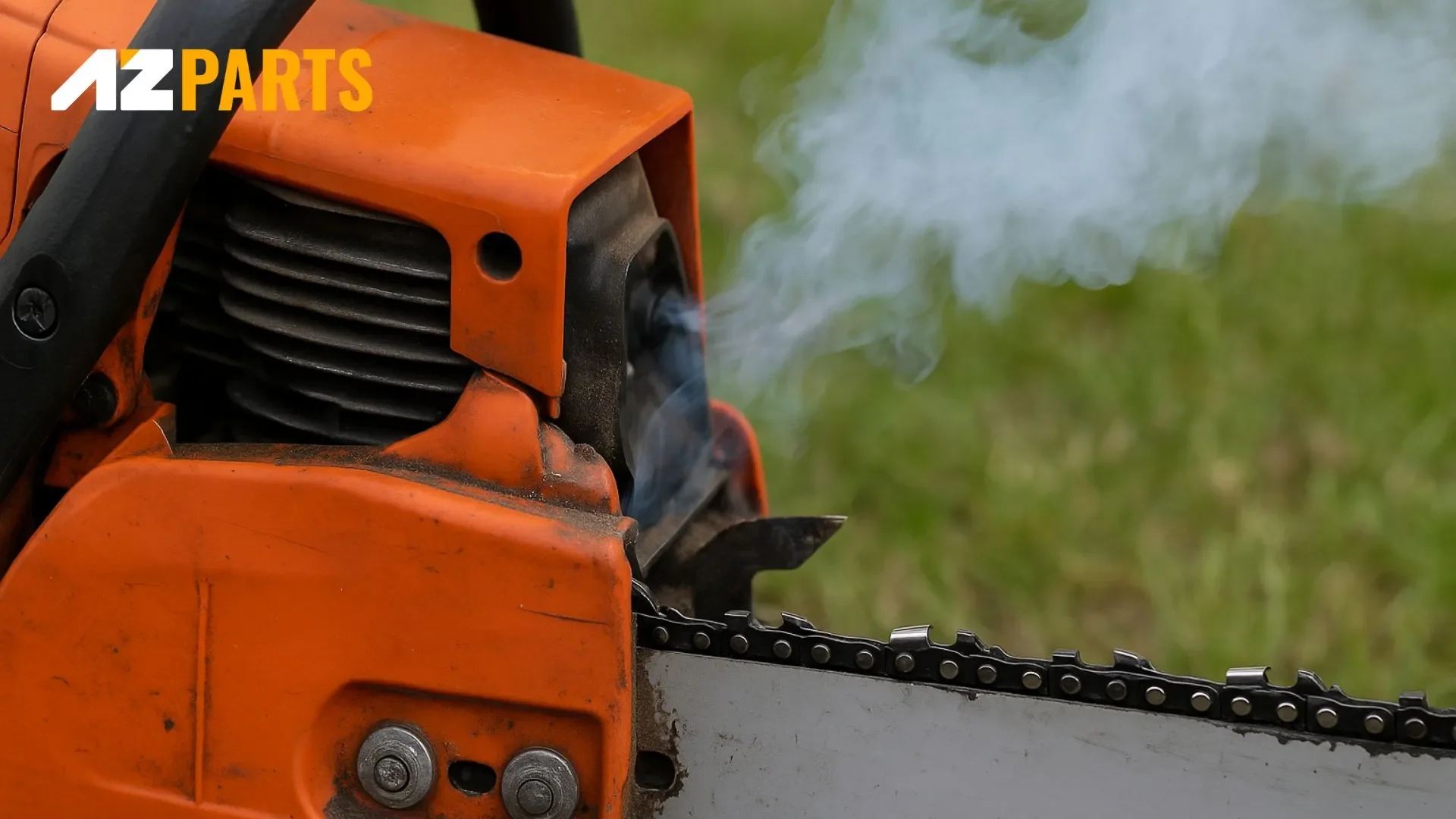
Oil Leakage in Chainsaw Engine Leading to Combustion Smoke (Source: AZParts)
Table: Causes and Fixes for White or Blue Smoke
Common Cause | How to Fix |
Using too much oil in the fuel mixture, resulting in incomplete combustion | Check the fuel-to-oil ratio and ensure it follows the manufacturer’s recommendation (typically 50:1). Use a measuring container for accuracy. |
Using the wrong type of 2-stroke oil, which doesn’t burn cleanly and leaves heavy residue | Drain the old or incorrect fuel and mix a fresh batch with clean, high-quality 2-stroke oil. |
Leaking oil seals or gaskets, allowing oil to enter the cylinder | Inspect the spark plug for signs of oil fouling (wet or black residue). Replace the plug and schedule engine servicing if the issue persists. |
Over-priming the engine, flooding the combustion chamber with oil-rich fuel | Avoid over-priming. If already over-primed, let the engine run for a few minutes under light load to burn off excess oil. |
Running the engine after long storage, when residual oil has settled in the exhaust or piston chamber | Start the chainsaw and allow it to run lightly for several minutes to burn off residual oil. Consider inspecting and cleaning internal components if smoke continues. |
2.2 Black Smoke
What it means: Black smoke typically indicates an overly rich fuel mixture with too much fuel and not enough air in the combustion chamber. This imbalance leads to inefficient burning and thick, dark smoke.
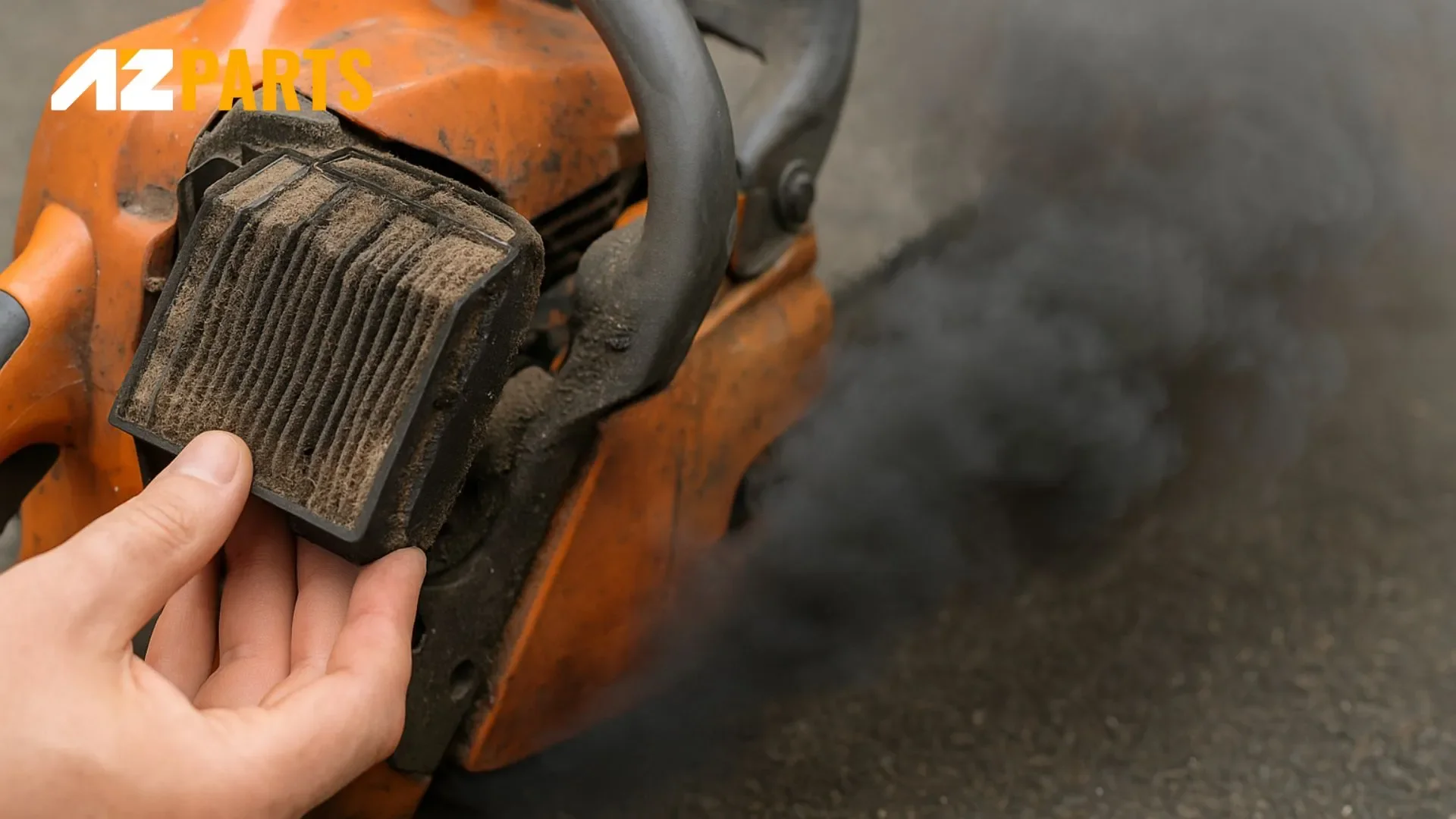
Clogged Chainsaw Air Filter Causing Black Smoke Emission (Source: AZParts)
Table: Causes and Fixes for Black Smoke
Common Cause | How to Fix |
A clogged or dirty air filter, which restricts airflow to the engine | Remove and inspect the air filter. If dirty, clean it with warm soapy water (foam filters) or replace it. A clean filter ensures proper oxygen flow for combustion. |
Improper carburetor adjustment, especially if the high-speed (H) screw is turned too far open | Adjust the carburetor following the manufacturer's guidelines. Typically, turn the high-speed (H) and low-speed (L) screws slightly clockwise to lean the fuel mixture. |
Excess oil content in the fuel, even if it’s a 2-stroke mix | Use fresh, properly mixed fuel with the correct oil-to-gas ratio. Discard any old or separated fuel that may cause rich-burning conditions. |
Operating the chainsaw at high altitudes without proper carburetor tuning | Tune the carburetor specifically for high-altitude operation to maintain a balanced air/fuel ratio. Consult the manual or seek professional help if needed. |
Final Note: Understanding smoke color allows you to quickly identify and correct problems before they cause long-term damage or safety hazards. Early intervention not only ensures your chainsaw runs efficiently, but also extends its lifespan.
3. Common Causes and How to Fix Them
Chainsaw smoke often stems from three primary areas: oil-related issues, fuel problems, and friction or mechanical wear. Understanding these causes allows for targeted maintenance and helps prevent long-term damage to your equipment.
3.1 Oil-Related Problems
Oil plays a critical role in the function of a chainsaw. It cools moving parts, reduces friction, and ensures smooth operation of both the engine and the bar/chain assembly. However, when oil is misused or poorly maintained, it becomes a source of smoke and malfunction.
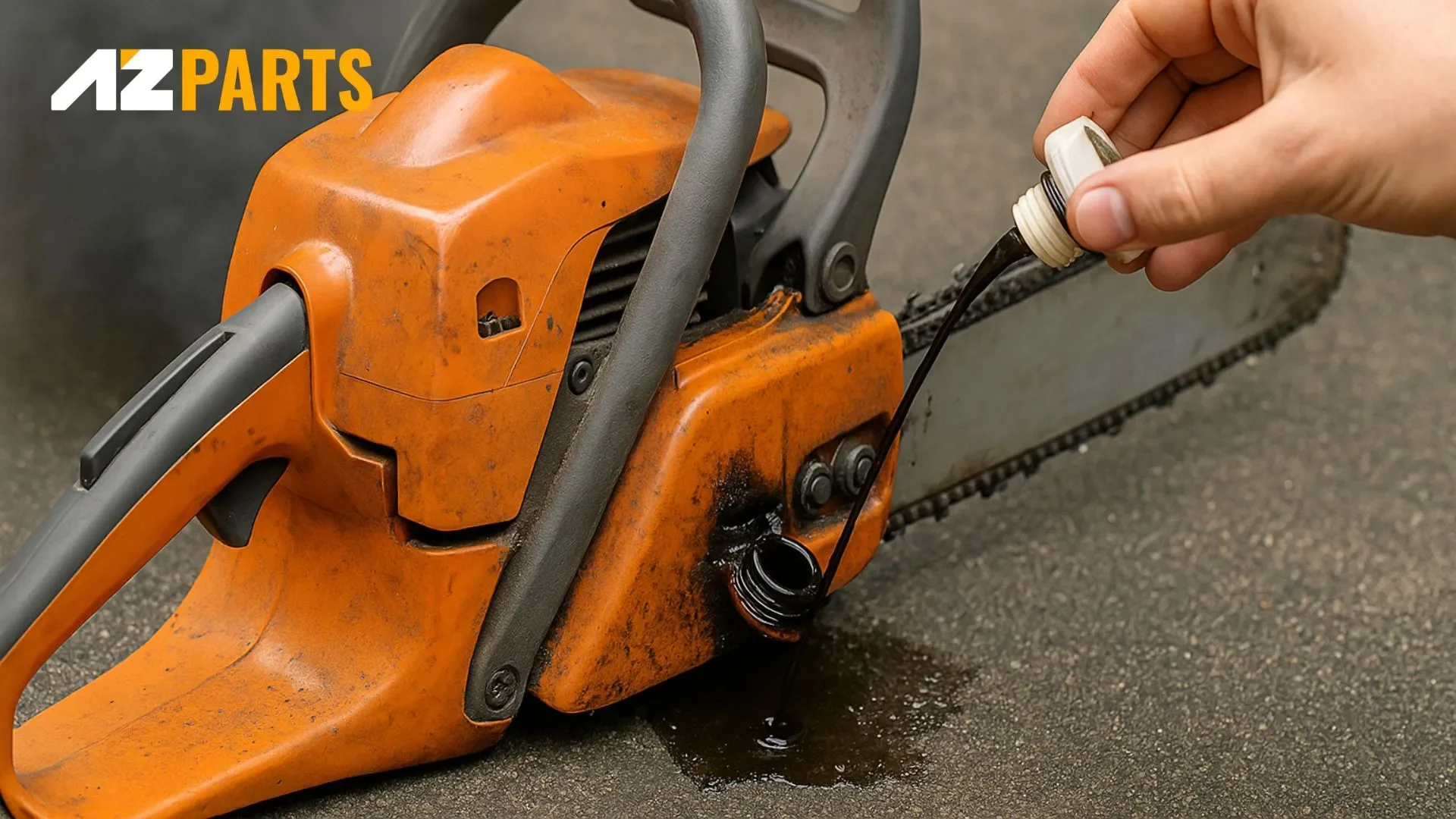
Common causes include:
- Using poor-quality or incompatible 2-stroke oil, which doesn’t burn cleanly and leaves residue in the combustion chamber
- Over-oiling in the fuel mix (e.g., mixing at 30:1 instead of 50:1), leading to excessive oil burning
- Oil line blockages or dirty exhaust ports, causing oil buildup and smoke emission during operation
- Over-lubrication of the bar and chain, which can result in visible smoke from the cutting area
How to fix:
- Use only high-quality, manufacturer-approved 2-stroke oil. Never substitute it with standard engine oil or other lubricants.
- Maintain the correct fuel-to-oil ratio (e.g., 50:1 or 40:1 as specified in the user manual) using a precise measuring container.
- Regularly clean the muffler and exhaust ports to remove carbon buildup caused by oil residue.
- Avoid unnecessary bar oil flow. Check the oiler adjustment screw and set it to match the cutting conditions.
3.2 Fuel-Related Problems
The fuel system is another common source of smoke, especially if fuel is old, improperly mixed or contaminated. Chainsaws that run on 2-stroke engines require a precise blend of fuel and oil. Deviation from that ratio or the use of degraded fuel can impair combustion and generate smoke.
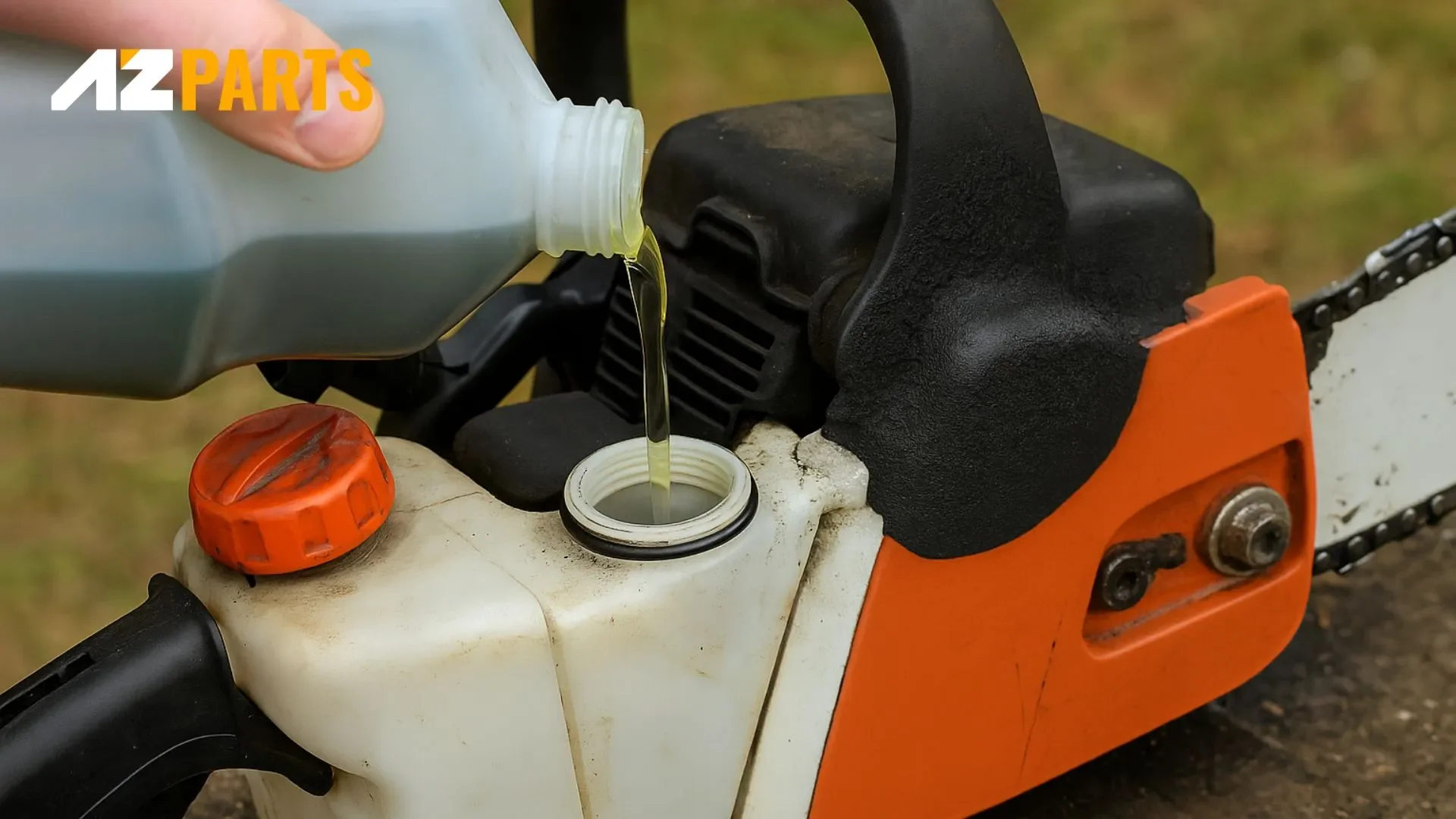
Common causes include:
- Incorrect fuel mixture, such as adding too much oil or too little fuel
- Stale or degraded gasoline, which doesn’t combust cleanly and leads to carbon deposits
- Using ethanol-blended fuel, which absorbs moisture over time, reducing performance and increasing smoke
- Fuel left in the tank for extended periods, leading to separation or gumming of internal components
How to fix:
- Always mix fuel and oil precisely to the ratio recommended by the manufacturer. Use measuring bottles or premix containers for accuracy.
- Discard fuel older than 30 days. Even stabilized fuel degrades over time, especially in warm or humid environments.
- Store fuel in a clean, sealed, and approved container, away from direct sunlight or heat sources to minimize evaporation and contamination.
- If smoke persists, clean or replace the fuel filter, and inspect the chainsaw carburetor for signs of clogging or deposits.
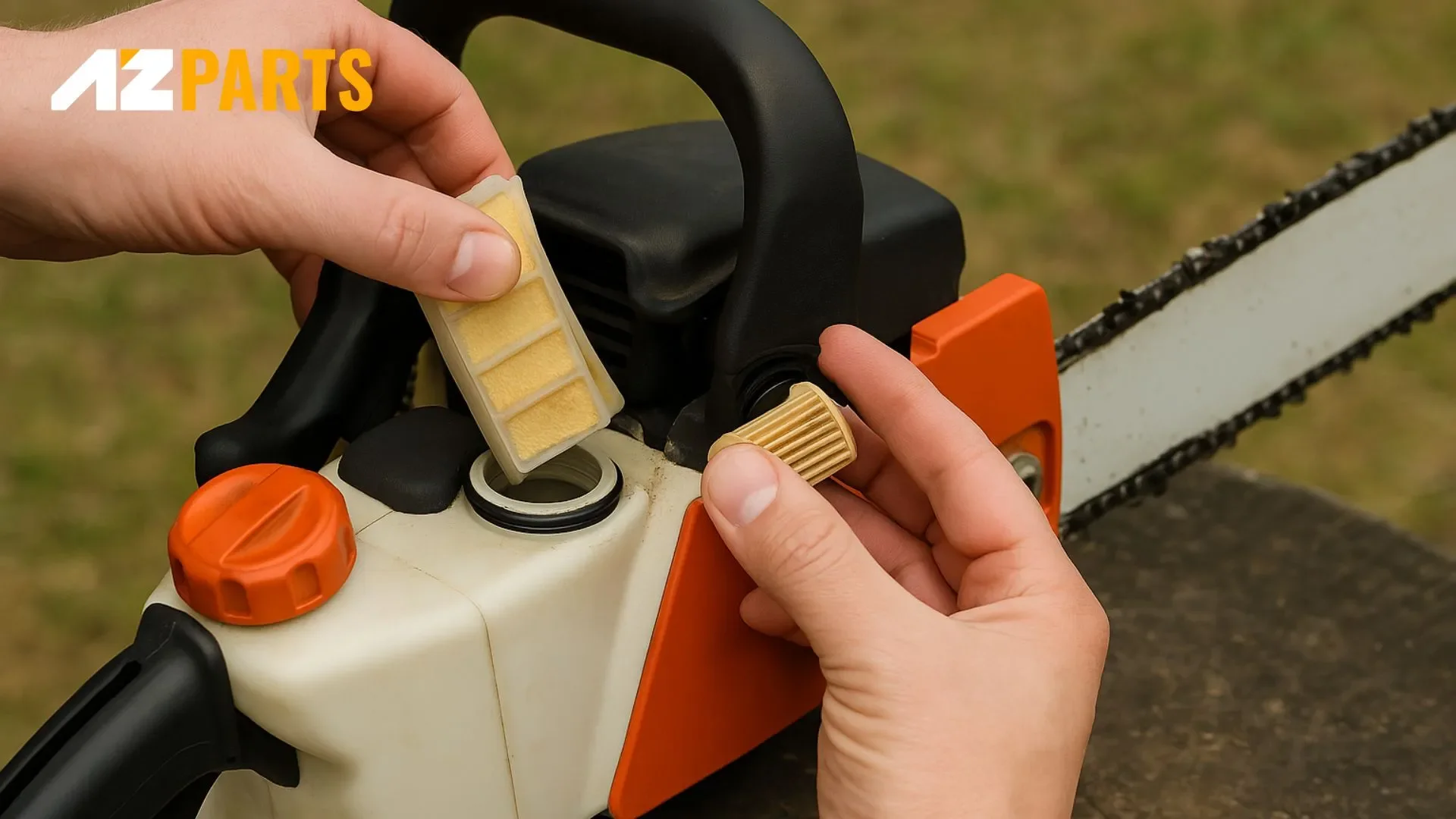
Inspecting and Replacing Chainsaw Fuel and Air Filters (Source: AZParts)
3.3 Friction and Mechanical Issues
Friction is a natural part of cutting, but excessive friction caused by poor lubrication or improper tension can create dangerous heat levels and cause the bar and chain to smoke. These issues can also lead to premature wear or complete failure of cutting components.
Common causes include:
- Running the chainsaw without bar and chain oil, leading to dry cutting conditions
- Clogged oil delivery holes in the guide bar, preventing oil from reaching the chain
- A dull or damaged chain, which increases resistance and generates more heat
- Incorrect chain tension either too tight (increased friction) or too loose (slapping and jerking)
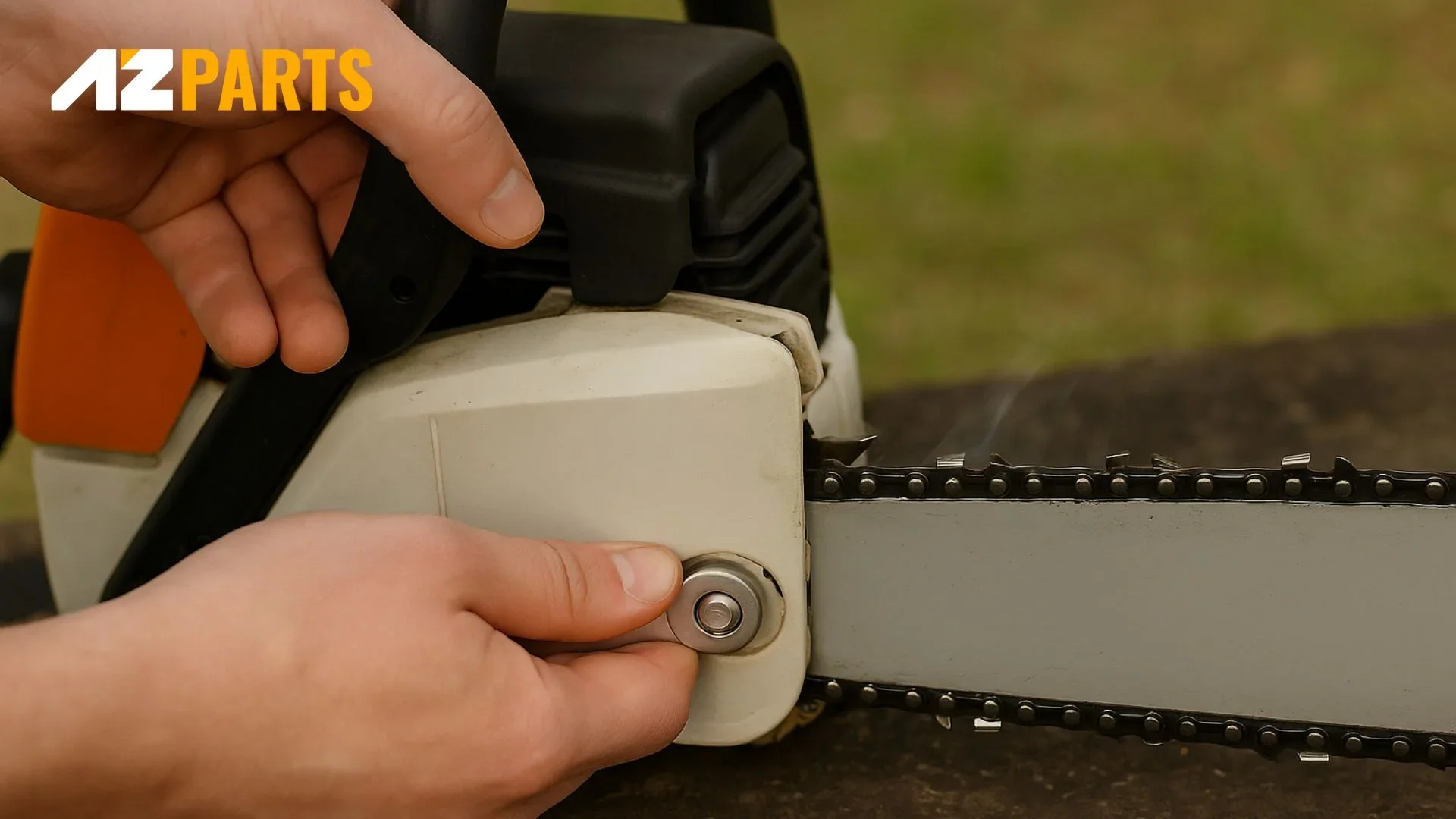
How to fix:
- Check and refill bar and chain oil before every use. During extended work, pause periodically to ensure lubrication is sufficient.
- Clean the guide bar’s oil ports regularly to ensure unobstructed oil flow to the chain.
- Inspect the chain for sharpness and proper filing angles. Replace or sharpen the chainsaw chain if cutting becomes difficult or uneven.
- Adjust the chain tension as per the manufacturer’s recommendation, it should be snug but still allow slight movement by hand.
- Consider flipping the guide bar after heavy use to promote even wear.
Chainsaw smoking is never something to overlook. Whether caused by oil burning, fuel issues, or mechanical friction, smoke is often a sign of deeper problems that can reduce performance, shorten engine life, and pose safety risks. By understanding the source, color, and underlying cause, you can take prompt, effective action to fix the issue and keep your chainsaw running at peak efficiency. For quality replacement chainsaw parts, AZParts offers everything you need to maintain performance and prevent smoke.
Learn more about other chainsaw's mantaining tips:
Contact Info
Address: 8 The Green, Ste A, Dover, Delaware 19901-3618, United States
Email: support@azparts.com
chainsaw
Further Reading
Further Reading


